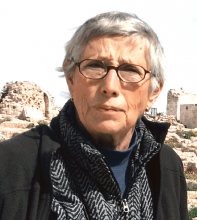You are here
Weakened, maybe, but Daesh is still appealing to many
Aug 17,2016 - Last updated at Aug 17,2016
Civilians and fighters had every reason to cheer the rout of Daesh from the strategic Syrian city of Majbij last weekend.
Men celebrated because they could shave off their beards and smoke; women because they could leave their homes and shed burkas, double-face veils and hijabs.
After a three-month campaign, fighters from the US-backed Syrian Democratic Forces cheered a hard-won victory over the brutal taqfiris who terrorise Syria and Iraq.
The rout deals a serious military blow to Daesh, which lost another strategic town in Syria. The defeat undermines Daesh’s claims it has Heaven on its side and weakens the morale of its fighters.
Their numbers have, reportedly, been diminishing in recent months due to losses on the battlefields in Syria and Iraq.
Manbij is an important asset; the town straddles key corridors along which men, money, arms, food and fuel have been transferred from Turkey to Raqqa, the Syrian headquarters of Daesh.
Daesh fighters sent packing from Manbij fled towards the town of Jarablus on the Tukish border. Jarablus is also on the very edge of territory controlled by the Democratic Forces, touted as Arab-Kurdish but, in reality, dominated by the Syrian Kurdish Protection Units, the military wing of the Syrian Kurdish Democratic Union Party, which is associated with the Turkish Kurdish Workers Party fighting Ankara for Kurdish rights since 1984.
Captured by Daesh in early 2014, Jarablus has been a key crossing point for fighters and supplies destined for Raqqa because the Kurds have created a wide Daesh no-go zone from east to west along the Turkish border.
This zone stretches from the Iraqi border east of Hasakah to Kobani (Ain Al Arab), located north of Raqqa, and ends at Daesh-held Jarablus, on the Euphrates River feeding into Lake Assad.
The territory from Jarablus to Kurdish-held Afrin is Kurdish populated but under Daesh control.
Thanks to this stretch of territory, the taqfiris’ supply routes from Turkey remain open, although Ankara joined the international community in branding Daesh a “terrorist” organisation.
Efforts by the Democratic Forces, to seize Jarablus have been obstructed by Turkey, which threatened to attack if the coalition moves on Jarablus, the logical target after Manbij if the aim of the campaign is to interdict Daesh’s supply routes.
Clearly, Washington has advised the leadership of the Democratic Forces not to provoke Turkey, particularly not at a time Ankara is still reeling from the failed army coup of July 15.
Recognising this, the Democratic Forces announced that their next objective is Al Bab, to the southwest, another crucial junction in northern Syria.
Al Bab, a Sunni town located northeast of Aleppo, is on the route to the city but dominates roads to Raqqa as well.
If this offensive is successful, the Kurds and their tribal Arab allies would have struck deep into Daesh-held territory, breaking the taqfiri grip in Aleppo province.
In recent months, Daesh lost Manbij, Palmyra and the belt of territory along the Turkish border in northern Raqqa province in Syria and Tikrit, Beiji, Dyala, Ramadi, Rutba and Fallujah in Iraq.
US Lt. General Sean MacFarland, commander of US-led coalition forces operating against Daesh in Syria and Iraq, claims that Daesh’s local and foreign fighters in these two countries are in dramatic decline.
He argues that their numbers have shrunk from 45,000 to 15-20,000. He also claims that the quality of the fighters had decreased.
“The enemy is in retreat on all fronts.”
It is hardly surprising that Daesh would attract fewer recruits after the strategic losses it has suffered since the beginning of this year, but it is unlikely that MacFarland’s figures for the number of taqfiris still deployed are correct.
The Soufan Group, which tracks the numbers of only foreign fighters (the majority from Arab countries), estimated at the end of last year that there were between 27 and 31,000 foreign fighters in taqfiri bands.
The group estimated the rate of return to home countries was 20-30 per cent, indicating a high turnover of recruits.
The Soufan Group also said numbers were on the rise before the reverses on the battlefields of Syria and Iraq.
As far as foreign fighters are concerned, there seems to be a steady but, perhaps, diminished flow of fresh volunteers.
British counter-radicalisation activists report hundreds of young men and women from Britain would still go to Syria if they had the means to do so and if they were not afraid of the authorities.
At least 850 Britons joined Daesh in Syria. Would-be recruits in countries other than Britain may not only find the means to travel to Syria but also be ready to defy the authorities in their home countries.
MacFarland apparently did not take into account that a majority of taqfiri fighters are Syrians and Iraqis. This could double the number of Daesh fighters to more than 60,000.
When forced to flee hostile forces, Syrian and Iraqi fighters take off their uniforms, throw down their arms and melt into the civilian population.
This is what they did in Manbij and in June in Fallujah, in Iraq, when Daesh was routed there. Many local elements may, however, be committed taqfiris ready to re-emerge and fight another day for Daesh or other groups. For them, fighting has become a career and a way of life, as it has for regular army soldiers and militiamen battling Daesh.
Hundreds of Iraqi fighters were intercepted by Shiite militiamen who beat, tortured and slew them after Daesh withdrew from Fallujah.
Unable to merge with the local population, foreign fighters fleeing Manbij made for the border with Turkey where they might have escaped with war or went to Jarablus to be deployed elsewhere Daesh is under threat.













